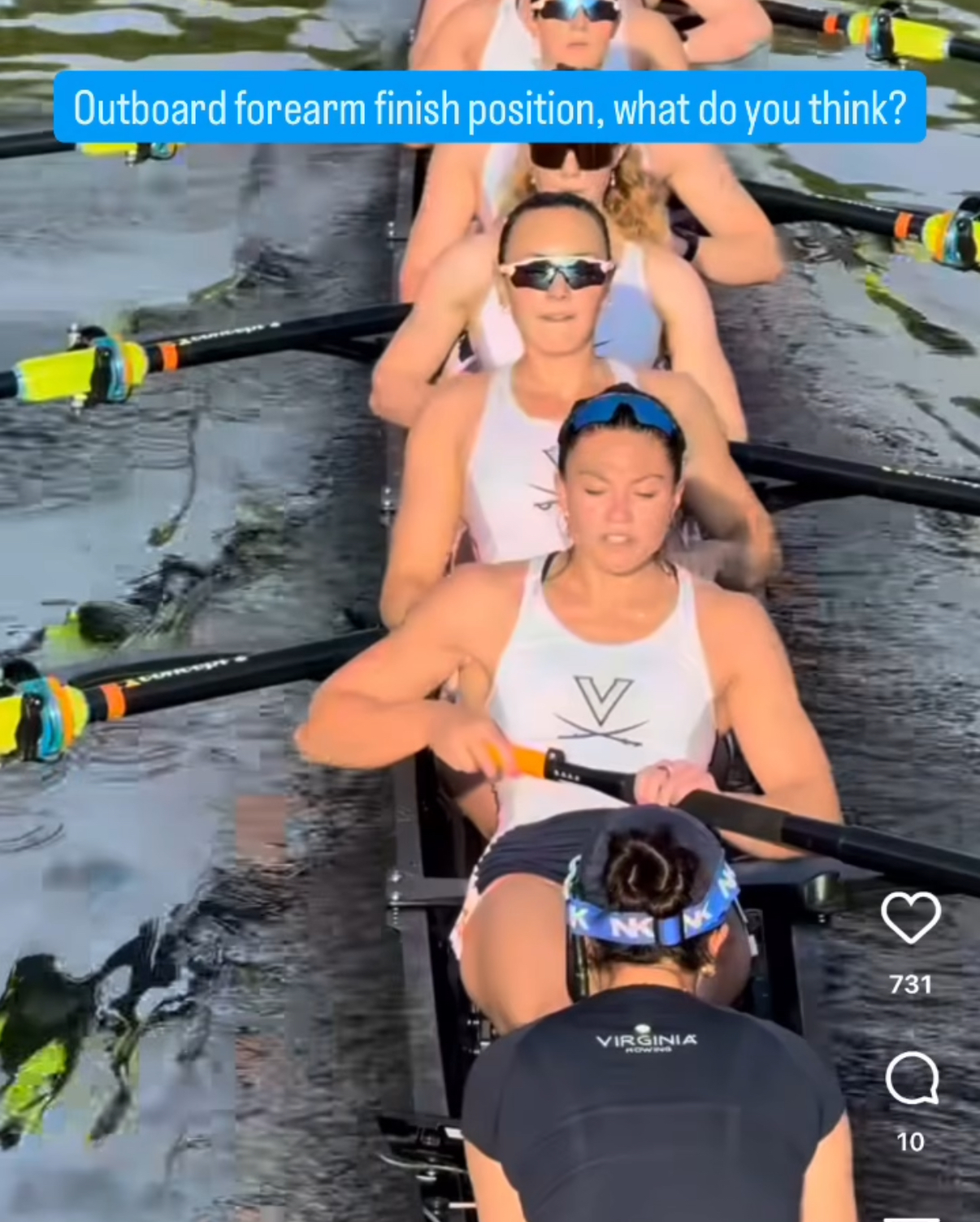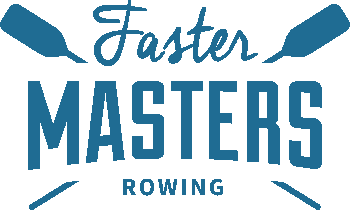I saw this post online from a respected coach and we discussed it in the Coach Mastermind group discussion.
What do you see in the photo? Compare stroke and 7 seat athletes. Think about technique, posture, power creation, muscle recruitment, likely blade spoon position.
[DON’T scroll down until you’ve thought about your answer.]

Coach’s Eye
My views and what I can see (training your coach’s eye to spot these differences is an important part of advancing your coaching practice).
I see the stroke has her right elbow pointing sideways out of the boat and her right hand rests on top of the oar handle with two fingers lightly holding the rubber grip and the wrist is flat; she leans slightly towards her rigger (shoulders aren’t level) and her inside arm is feathering the oar and the elbow is lower than the oar shaft. There’s a lot of tension in her left forearm.
The 7 seat has her left elbow pointing behind her towards the girl sitting behind, the wrist is flat; she also leans a little towards her rigger and her inside elbow is pointing a little out the side of the boat. We cannot see her right wrist or oar handle grip.
Implications for technique
If stroke is controlling her oar handle height with her inside hand (I can see more tension compared to her outside hand) then she likely will be less skilful placing the oar at the catch. It’s harder to control the push down on the oar handle if your elbow is below your wrist or the oar handle/shaft. Similarly trying to place the catch using the inside hand is less accurate (as your inside hand is closer to the oar shaft fulcrum).
If 7 has her outside elbow pointing behind her she’s likely continuing the arm draw using her lats as well as bicep/tricep. She looks like she isn’t feathering with her outside hand.
Both athletes may be able to get more power right at the end of the drive phase if they used their inside hand to pull the very last bit of the stroke. This is because as the oar handle comes around the arc, the outside arm becomes increasingly ineffective, while the inside arm can have a 90 degree angle to the handle which is efficient for pulling. Note this is a very small part of the power phase.
Questions to ask
Could the boat go faster if these technical points were changed? How fast can athletes change their technique? When fatigued, how quickly will athletes revert to “poor” technique? Have you got time to fix these things before a big regatta? Is this a coaching style you want to encourage? How much crew symmetry do you desire in your crews?
All of this is in service to identifying inconsistencies in your crew and for you to coach them towards identical positions while activating the same muscles to make their rowing stroke power.


